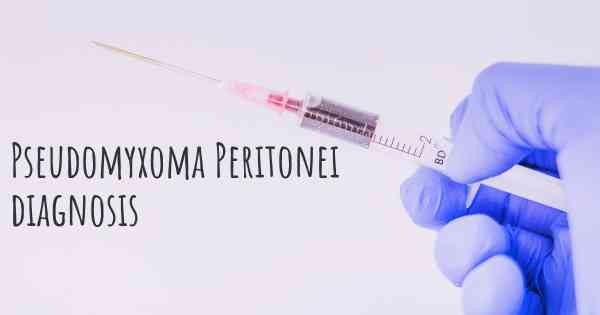How is Pseudomyxoma Peritonei diagnosed?
See how Pseudomyxoma Peritonei is diagnosed. Which specialists are essential to meet, what tests are needed and other useful information for the diagnosis of Pseudomyxoma Peritonei

Pseudomyxoma peritonei (PMP) is a rare condition characterized by the accumulation of mucinous gelatinous material in the peritoneal cavity, which is the space that surrounds the abdominal organs. It is typically caused by the rupture of a mucinous tumor originating from the appendix or, less commonly, from other organs such as the ovary or colon.
Diagnosing PMP can be challenging due to its rarity and the non-specific nature of its symptoms. However, there are several diagnostic methods that can be employed to identify and confirm the presence of PMP:
- Medical History and Physical Examination: The initial step in diagnosing PMP involves a thorough evaluation of the patient's medical history and a physical examination. The doctor will inquire about the patient's symptoms, their duration, and any relevant risk factors. During the physical examination, the doctor may palpate the abdomen to check for any abnormalities or signs of fluid accumulation.
- Imaging Studies: Various imaging techniques are commonly used to visualize the peritoneal cavity and detect any abnormalities. These may include:
- Ultrasound: This non-invasive procedure uses sound waves to create images of the abdominal organs. It can help identify the presence of fluid or masses in the peritoneal cavity.
- Computed Tomography (CT) Scan: CT scans provide detailed cross-sectional images of the abdomen, allowing for the detection of tumors, fluid accumulation, or other abnormalities.
- Magnetic Resonance Imaging (MRI): MRI uses powerful magnets and radio waves to generate detailed images of the abdomen. It can provide valuable information about the extent and location of the tumor.
- Tumor Markers: Blood tests may be conducted to measure certain tumor markers, such as carcinoembryonic antigen (CEA) and CA 19-9. Elevated levels of these markers can indicate the presence of PMP, although they are not specific to this condition and can be elevated in other diseases as well.
- Diagnostic Laparoscopy: In some cases, a minimally invasive surgical procedure called laparoscopy may be performed to directly visualize the peritoneal cavity. During this procedure, a small incision is made in the abdomen, and a thin tube with a camera is inserted to examine the organs and collect tissue samples for further analysis.
- Pathological Examination: The definitive diagnosis of PMP is made through a pathological examination of the collected tissue samples. A pathologist will analyze the samples under a microscope to determine the presence of mucinous tumors and the extent of peritoneal involvement.
It is important to note that the diagnosis of PMP requires a multidisciplinary approach involving radiologists, surgeons, and pathologists. The rarity and complexity of the condition often necessitate consultation with specialized centers or experts experienced in managing PMP.
used but appendix cancer specialists should read them sometimes other mustead them as ovarian cancer.
Posted Aug 13, 2017 by Alice 2000








